Publishers, journalists and media – they all ask the same question: How do I turn my online content into revenue? Print media, besides the money made from product sales, usually relies on advertising revenue. However, display advertising, as we know it from the past, has died out. It is now time to think and act digitally. In this article, we will show you how digital content can be used specifically as an advertising medium and thus be used to directly generate revenue.

The Searchmetrics Digital Strategies Group specializes in supporting the digital transformation of companies. Let our experts show you where your business is on the road to digitization:
Video: Online sales for publishers
The topic of this article was also covered by one of our recent webinars. This video is part of the trilogy “From Dinosaur to Unicorn”, where experts give advice on different aspects of digital transformation. Björn Beth, Director of the Searchmetrics Digital Strategies Group, and Svetlana Stankovic, Team Lead SEO Consulting at the Digital Strategies Group, discuss content marketing strategies for publishers and showcase examples of industry leaders.
The Print Business Model – Offline Content that pays
In the past, publishing houses literally had a licence to print money, with a profit margin of 30-40% and millions of dollars in turnover. Sales were only a secondary source of revenue for the newspapers. Indeed, ads from third-party providers were the real source of income. By cooperating with publishers, they hoped to reach the largest possible audience.
However, it wasn’t only companies advertising their products and services, small ads from private individuals were also printed. Up to several hundred euros had to be paid by the average consumer to take out a 5×5 cm space in the newspaper for their content. Thus, newspapers have transformed from an information medium to an advertising driver, with a constant increase of advertising revenues until the year 2000.
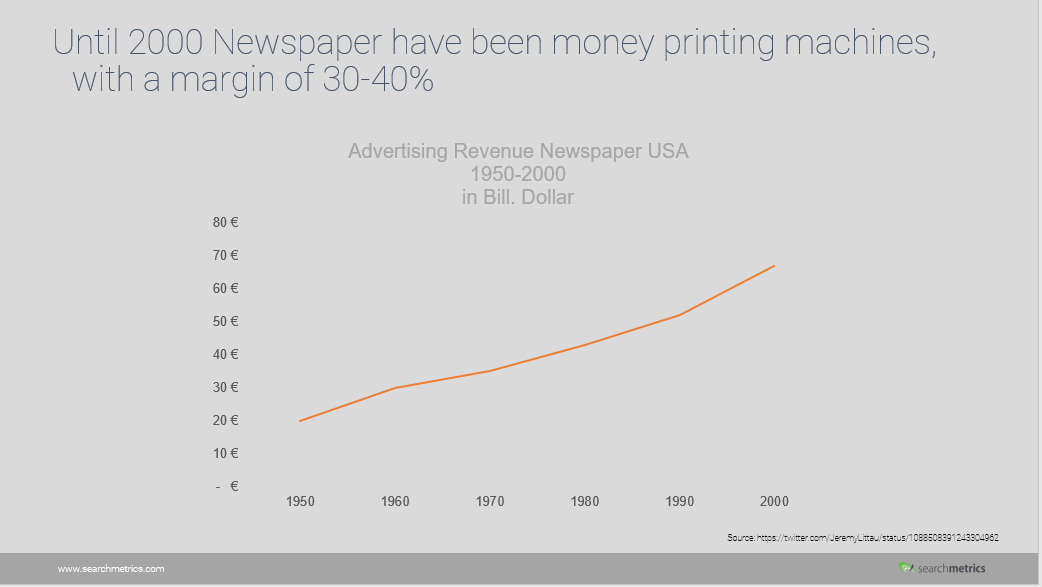
At a certain point, newspapers turned mostly digital, and posters and brochures became banners and pop-ups. Display marketing was born! Nowadays, the German publishing giant, Axel Springer, still drives revenue with advertising, but not with display ads. The publisher generates profit through online companies, such as the comparison portal Idealo. The digital transformation of content has been a driving force for a long time –classic print media, on the other hand, started running out of gas some time ago.
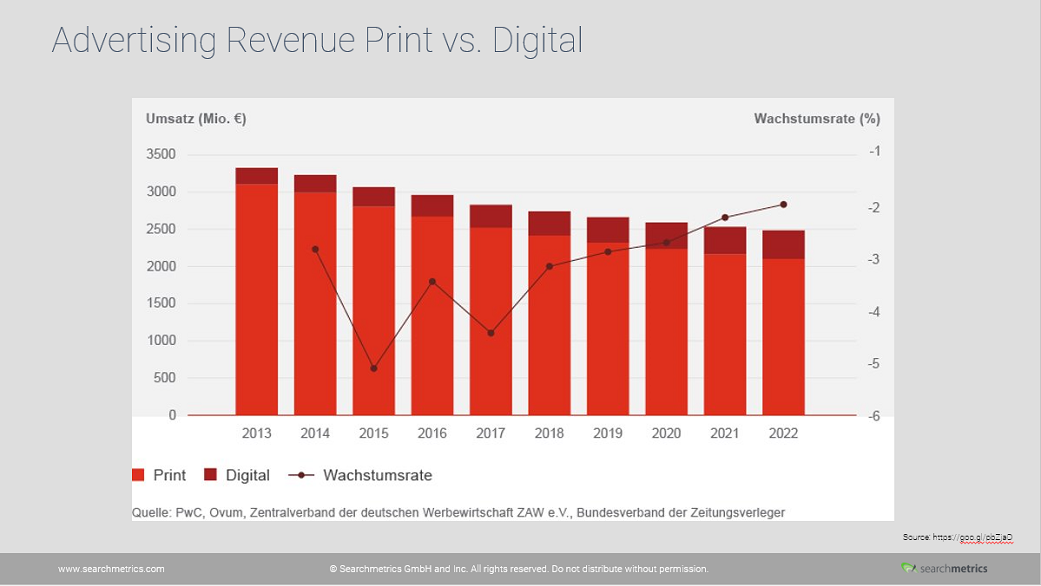
The Print Business Model 2.0 – Online Content that doesn’t pay
Publishers understood that the old business model had served its purpose. However, instead of creating a new strategy, publishing houses simply kept on going with the same concept, applying the the Print Business Model 2.0 to the digital working world 2.0.
But why doesn’t this work?
The three sources of income of the traditional business model are classified ads, sales, and display advertising. Since digital structures have been established in the advertising industry, revenues from all three sources have dropped significantly. Today’s customers use free platforms like Craigslist or eBay for their classified ads, instead of investing in offline and online media.
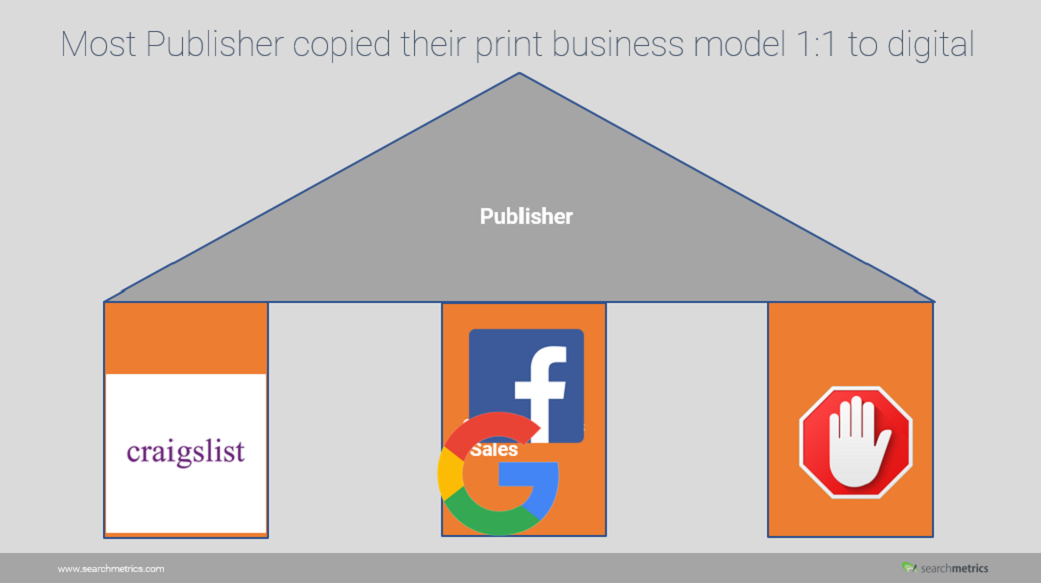
Subsequently, publishers had to cope with natural losses of up to 44% in sales and subscriptions. Nowadays, these lost advertising revenues go somewhere else. Generations X and Y mainly use Google and social media like Facebook or Twitter to share information. In total, 90% of all revenue goes to Google, newspapers share the remaining 10%.
Another big problem is display marketing. About 25% of Germans use adblockers, which automatically filter online advertising. However, the other 75% are difficult to reach. The average click-through rate (CTR) of banners is around 0.05%.
What does this mean in practice?
The German magazine, Focus, provided a sample calculation of the CTR in display advertising. The starting point here is 1,000 people seeing an ad with a CPM (cost per thousand impressions) of 45 EUR. This means that, with a CTR of 0.05%, it will generate approximately half a click. The resulting cost will be 90 EUR for 2,000 impressions, and one click that have not even necessarily been converted.
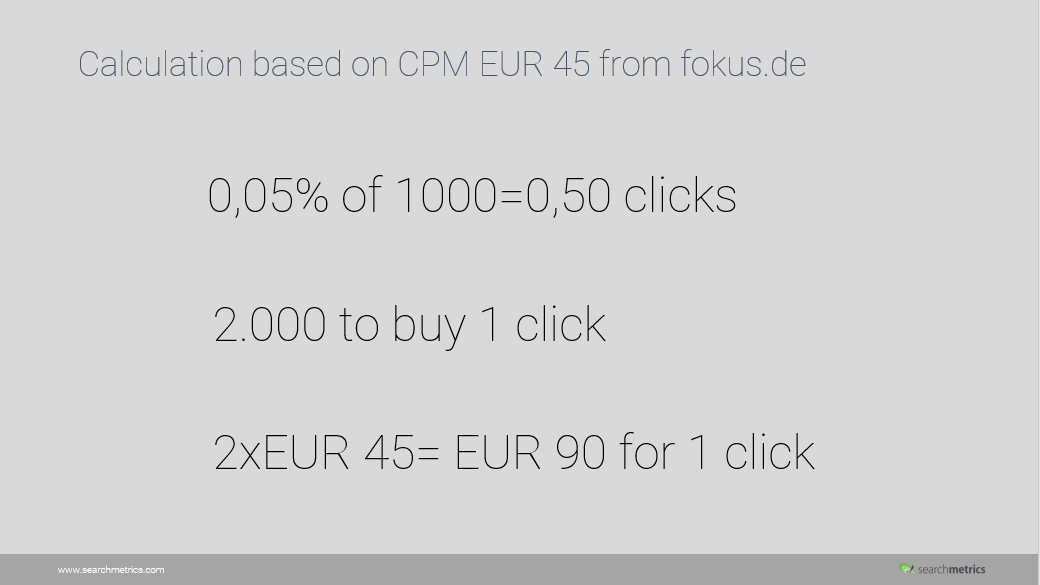
The technology platform Atlantic.com notes, “You’re more likely to survive a plane crash than click a banner ad.” Consequently, it is overpriced and inefficient to invest in display ads.
5 alternative ways of turning your content into revenue
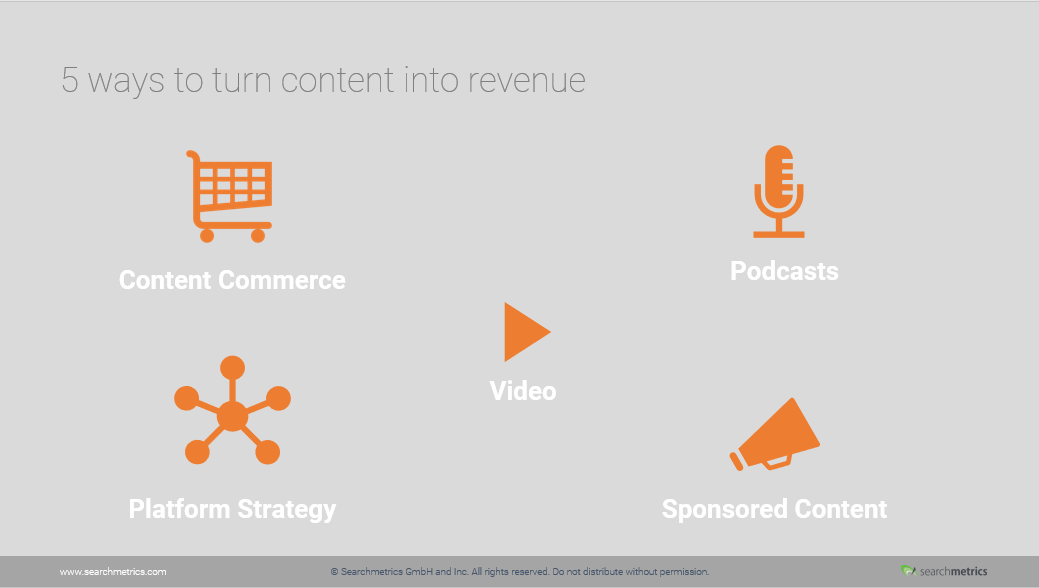
With advertising no longer proving as profitable, new methods are needed to generate revenue from online content.
1. Content Commerce
Content Commerce is a concept which combines content marketing with e-commerce, resulting in visible success.
As an example, we can look at the American comparison portal Gizmodo. Gizmodo generates 25% of its revenue with content, with a conversion rate of 16% per product.
How does this work?

Since Gizmodo is a comparison portal, you immediately spot content for specific product groups. Once you arrive at the welcome page, you see an article which presents a product, defined as a “top deal”. Clicking on the link takes you to a domain called Kinja Deals, where you can read the complete product article. This content was written independently by an external editorial team and can be classified as a digital ad format. What we see here is a classic affiliate system. In the content itself you will find links to the Gizmodo provider, which will be billed according to the PPC method. These two pages are based on a referral strategy and generate almost twice as much traffic due to clever link building.
Another magic formula here is content optimization. While a lot of publishers focus on conversion-rates and apply a “publish-and-forget” approach to their content, Gizmodo’s main concern is content revenue. “We’ve basically been writing stories optimized against yesterday’s sales data every day for the last five years.”
Recently, a partner platform of Gizmodo, called theinventory.com, has been launched. Gizmodo gets around 76.4 million page visits per month, and directs many visitors from their page to The Inventory, where those clicks ideally convert. Overall, 45% of 9.9 million visits at The Inventory are generated through this referral strategy (users of Gizmodo are directed to The Inventory).
This method is only possible due to excellent product content, which is key for any e-Commerce business who wants to generate revenue from online content.
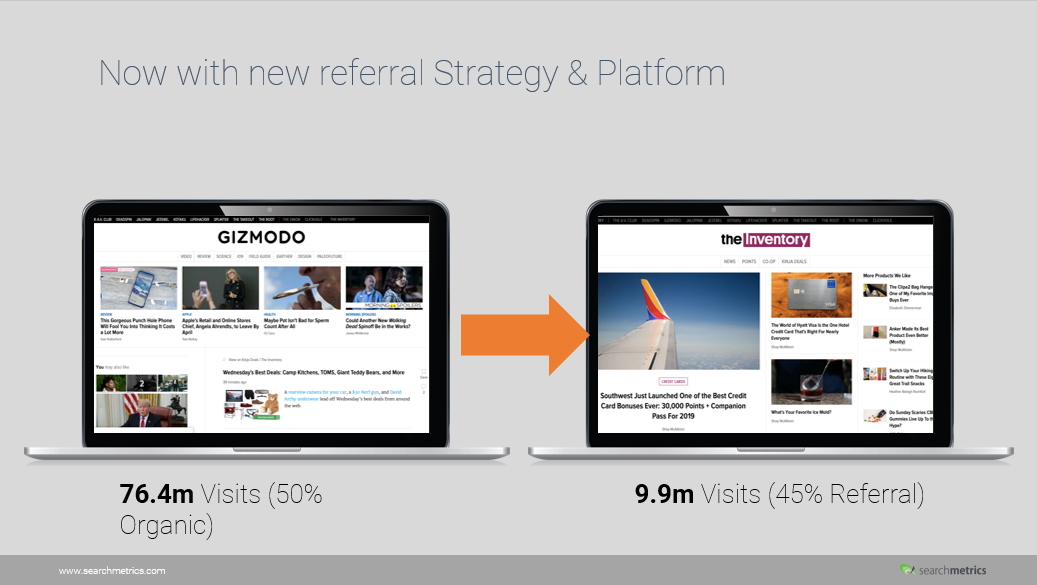
2. Sponsored content
Sponsored ads are part of display marketing and remain, as mentioned earlier, largely ignored by users. However, things are different with “sponsored content”.
The newspaper “Welt” from Axel Springer has taken up this approach and successfully implemented it in their strategy. If you have a look at their page, you might see an article that leads directly to a conversion page. This doesn’t feel like a regular ad banner, although it is basically a display ad. Nevertheless, the content you’ll find will be valuable for readers and also fits thematically to the landing page of the referring domain.

3. The platform strategy
External sponsored content generates advertising revenue, but not necessarily traffic. That’s why Axel Springer Verlag has also launched its own platform strategy.
The TECHBOOK platform is part of the Axel Springer publishing house and releases articles on the latest technical market events. The content is sponsored by the landing page of the newspaper “Bild Zeitung”, which also falls under the umbrella of the Axel Springer Publishing Group. In this way, TECHBOOK can reach the entire readership of the Bild newspaper, one of the most successful tabloids in Europe.

Since both formats are part of the same publishing group, no advertising revenue is generated. Hence, some of TECHBOOK’s articles also contain an externally sponsored product link as a call-to-action (CTA) that matches the content.
4. Podcast
The Reuters Institute for Journalism states in the Digital News Report 2018, that 75% of publishers believe in the success of podcasts for the future. In fact, audio is indeed a great opportunity.
A current example from the industry is the sports magazine The Ringer. Their in-house podcast, “The Bill Simmons Podcast”, is presented by advertising partners, with ad sales of 15 million dollars and a download rate of 35 million in 2018.
Another successful example is the podcast of the platform Online Marketing Rockstars (OMR). The media company hosts 20 different podcast formats with a variety of presenters, starting from ad partners such as Youtube, where insights from online marketing are discussed, to influencers from the online marketing scene. In Germany alone, the podcast has reached an advertisement revenue of 700,000 euros, and rising.
Podcasts have great potential for marketing journalism and the resulting content. Particularly interesting in this context is the development of smart speakers. Amazon’s “Alexa” assistant is already on the rise and is becoming part of the everyday life of many people. It can be assumed that content will, at some point, only be successful if it works in audio format. It is expected that marketing strategies will have to be adapted accordingly in the future.
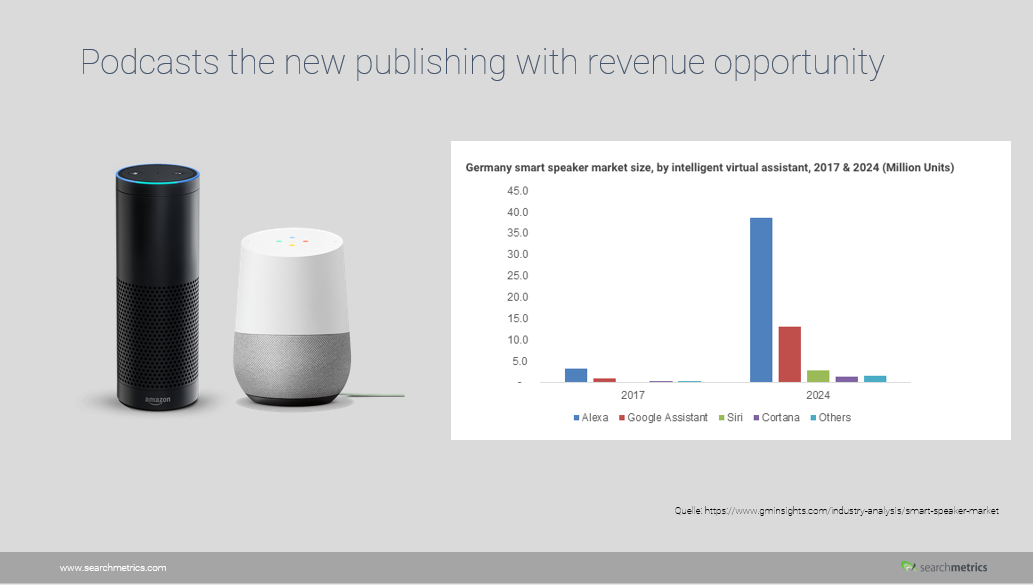
5. Videos as an advertising format
It’s not only audio content that generates revenue. The tabloid “Blick” from Switzerland trusts in visual advertising and integrates videos from advertising partners into their content. An example is its cooperation with the e-commerce platform, Weinclub.ch. By incorporating videos with a winemaker, they can simultaneously promote the Blick article and the Wein Club brand. Again, we’re seeing a successful affiliate strategy that helps you to get the most out of your content revenue.

Would you like to find out more about how you can turn your content into revenue? Get in touch with one of our experts!
